
S. American: Chemosynthetic Management of the Water/Energy/Nutrient Nexus (WENN) by CO2 Negative/RCP 2.6
Pitch
Chemosynthetic production of biomass using sewage nutrients can provide carbon negative fuel and biochar to even small/poor communities.
Description
Summary

(RCP 2.6)
The STEM needed to radically expand the production of CO2 negative energy; reclaim water; and manage bulk nutrients is extant and offers a realistic path to achieving the RCP 2.6 metastrategy.
-IPCC (WG3)-"..the combination of bio-energy, carbon capture and..storage (BECCS)...if biomass is grown sustainably, this combination may lead to negative emissions". This proposal is a BECCS class proposal.
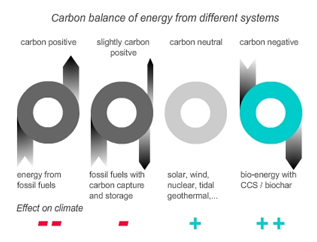
Marine Based RCP 2.6 Tech:
-Marine Biomass- International interest in sustainable marine biomass/biofuel production is high (a)(b)(c)(d)(e).
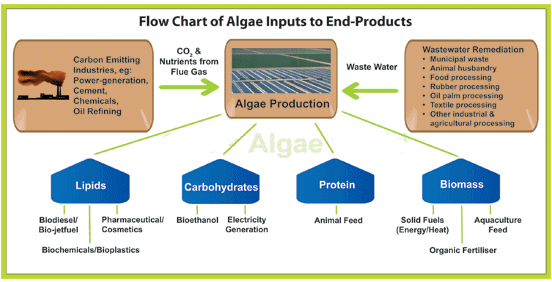

-Large scale oceanic concepts under development (a)(b)(c).



The Gas Exchange of Hydrogen-adapted Algae as Followed by Mass Spectrometry- Chemo based biochar/biofuel/food/feed/fertilizer/ fresh water etc.
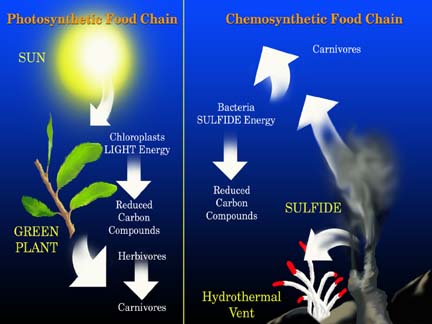
-NASA/OMEGA Project. "...to grow algae, clean wastewater, capture carbon dioxide and..produce biofuel without competing with agriculture for water, fertilizer or land.".

-IMBECUS Protocol: Working draft of a marine centric STEM/cooperative governance scenario.
-General Artificial Islands Info:

-Land Based WENN Tech:
The above marine chemosynthesis tech can also be used in terrestrial tanks and many existing FF pipelines can be used as Dark Bio-Reactor Pipelines (DBRPs).

-Alabama Gets First-In-World Carbon-Negative Algae Biofuel- DBRP based biomass cultivation is lower in cost due to multiple factors (a)(b)(c)(d).

Future WENN Corridors?

Most utility corridors can be converted to WENN.

Due to the high 'public/civic use need' for WENN conversion (i.e. existential need for AGW mitigation/adaptation), emanate domain laws (EDLs) can hypothetically be used to secure existing pipelines/lands (a)(b) for WENN use.

Using EDLs to acquire existing right-of-ways and the pipelines themselves reduces initial costs.

(First Biodiesel Pipeline...Or, future DBRP?)
Thus, the water, energy and nutrient nexus can develope along the same utility right-of-ways (2M km+US). Adding advanced transportation and information technology to the above would be logical.





Category of the action
Reducing emissions from electric power sector.
What actions do you propose?
"Today we need a global Apollo programme to tackle climate change; but this time the effort needs to be international. We need a major international scientific and technological effort, funded by both public and private money.". (Excerpt from: A GLOBAL APOLLO PROGRAMME TO COMBAT CLIMATE CHANGE)

The above advocates for massive international concentration of political and capital strength on deployment of solar energy means and methods to achieve the needed CO2 reductions. This position is understandable and supportable.
However, carbon neutral energy means and methods, such as solar energy conversion, are no longer adequate to forestall drastic climate change. At this time, the full spectrum of the water, carbon negative energy and nutrient nexus management needs must be factored into any form of 'Global Apollo Programme to Combat Climate Change'.

Primary action/principle being proposed: Vast scale use of chemosynthetic and or heterotrophic cultivation of biomass as a means for urban, rural, marine and overall global scale water, energy and nutrient nexus (WENN) management.
Funding for this WENN management regimen can be achieved through the use of environmentally focused intergovernmental agreements, market funding instruments and/or non-profit funding programs such as:
1) The most forward leaning intergovernmental climate change mitigation/adaptation agreement is summarized by the US Department of State. In part:
- Commitment by developed countries to the goal of mobilizing jointly USD $100 billion per year by 2020 from public and private sources, to address the needs of developing countries in the context of meaningful mitigation actions and transparency on implementation
- A call to establish the Green Climate Fund, a new multilateral trust fund designed to foster low emission and climate resilient development and catalyze private sector investment.
2) The Green Climate Fund (a):
"..the Fund will promote the paradigm shift towards low-emission and climate-resilient development pathways by providing support to developing countries to limit or reduce their greenhouse gas emissions and to adapt to the impacts of climate change, taking into account the needs of those developing countries particularly vulnerable to the adverse effects of climate change.".

In the non-intergovernmental space, a growing number of important market funding paths are being developed. Such as:
3) Green Bond Principles 2014: Voluntary Process Guidelines for Issuing Green Bonds:


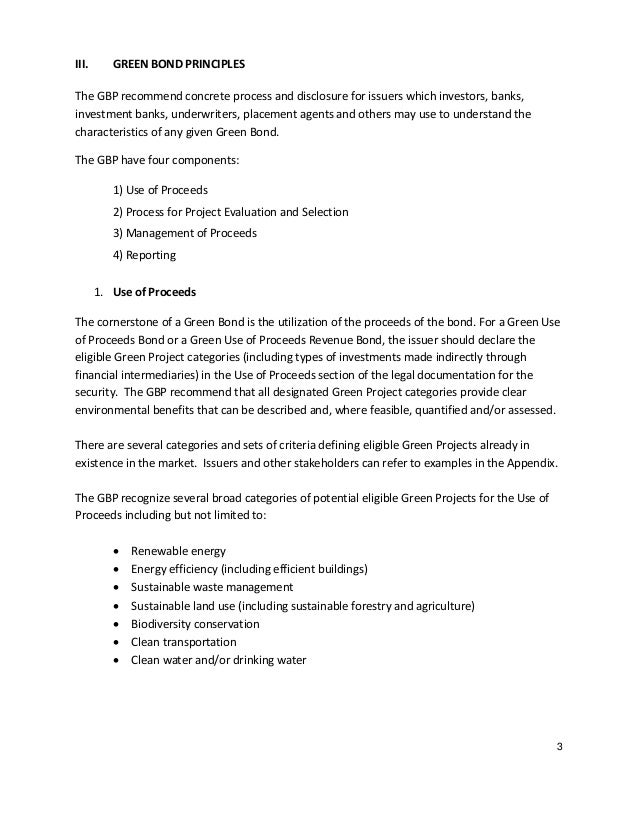


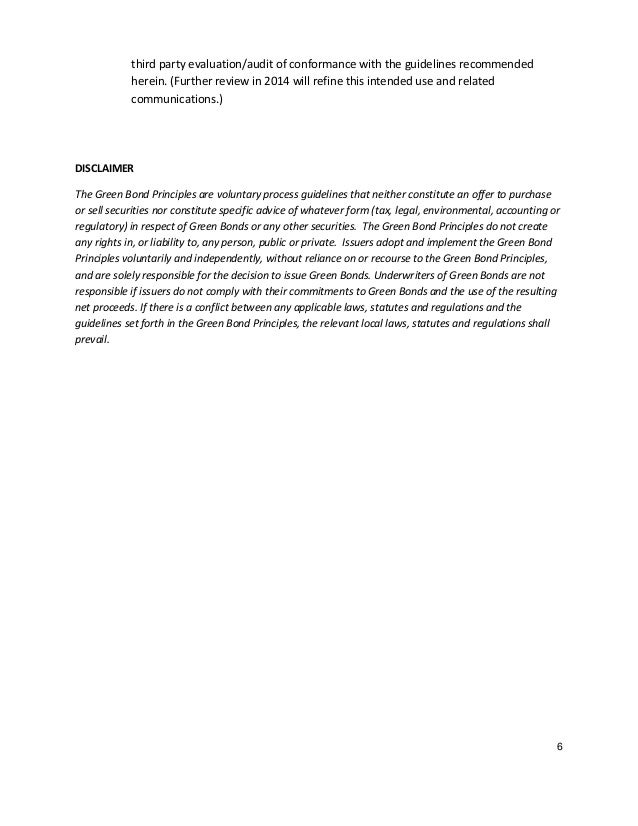

"Funding for new technologies that permit significant reductions in greenhouse gas (GHG) emissions"
"Strengthen national preparedness and resilience, building a ready and resilient Nation, with the ability to plan, prepare for, and respond to disasters. Proposals for climate resilience coupled with a restructured DHS grant program will help create robust national preparedness capabilities.".
6) "Transforming the Traditional Municipal Bond Market to Finance Environment-Friendly Green Projects"
"In 2013 Massachusetts became the first state in the U.S. municipal bond market to issue these so-called green bonds. The offering was so successful that Massachusetts tripled the volume of green bonds offered in 2014, selling $350 million in bonds to individual and institutional investors this month. According to Massachusetts Treasury officials, the demand for green bonds far outpaced the supply. The Treasury reportedly received received $1 billion in buy orders for the $350 million bonds offered. billion in buy orders for the $350 million bonds offered.".
7) ‘Conservation Bonds’ Take Green Financing to the Next Level
"Green bonds, as described by the World Bank, “are fixed income, liquid financial instruments that are used to raise funds dedicated to climate-mitigation, adaptation, and other environment-friendly projects.” When issued by multilateral institutions such as the World Bank, or agencies of national governments such as the German Development Bank, such bonds may carry low, or even concessionary interest rates. Furthermore, a number of private financial institutions, attracted by the reliable returns on projects financed by green bonds, have entered the marketplace.
The Green Bond market is rapidly growing. First issued by the World Bank in 2007, the green bond market grew to $11 billion in 2013. As reported by the World Bank, some $32 billion of green bonds have been issued by multilaterals, governments and corporate issuers from January through October 2014, and could surpass $40 billion for the year.".
"Green bonds were created to fund projects that have positive environmental and/or climate benefits. The majority of the green bonds issued are green “use of proceeds” or asset-linked bonds. Proceeds from these bonds are earmarked(link is external) for green projects but are backed by the issuer’s entire balance sheet. There have also been green "use of proceeds" revenue bonds(link is external), green project bonds and green securitized (link is external) bonds.".
"The accredited institutions include the following:
- Centre de suivi écologique (CSE) from Senegal, which focuses on combating desertification and protecting coastal areas. In 2010, CSE was the first national institution to be accredited and to implement a project through the Adaptation Fund , the first international climate fund to take the pioneering step of accrediting developing country institutions.
- Fondo de Promoción de las Áreas Naturales Protegidas del Péru (PROFONANPE) that specializes in funding biodiversity conservation and managing protected areas. Like CSE, PROFONANPE is also accredited to the Adaptation Fund.
- the Secretariat of the Pacific Regional Environment Programme (SPREP), an intergovernmental organization of Pacific Island countries and territories, based in Samoa, which focuses on protection and sustainable development of the Pacific region’s environment
- the Acumen Fund, Inc. (Acumen), a well-respected private venture capital fund that invests in developing country entrepreneurs and businesses working to alleviate poverty and advance sustainable development. The social impact investment fund works on improving the lives of low income communities in Africa and Asia, especially in healthcare, agriculture and clean energy.
Three international organizations were also accredited: the Asian Development Bank (ADB), Kreditanstalt für Wiederaufbau (KfW), and the United Nations Development Programme (UNDP).".
10) "Major International Research Initiative Launched to Improve Food Security for Developing Countries - Bill & Melinda Gates Foundation." (a).
"Listening to farmers and addressing their specific needs. We talk to farmers about the crops they want to grow and eat, as well as the unique challenges they face. We partner with organizations that understand and are equipped to address these challenges, and we invest in research to identify relevant and affordable solutions that farmers want and will use.
- Increasing farm productivity. We support a comprehensive approach to helping smallholder farmers prosper that includes access to heartier seeds, more effective tools and farm management practices, locally relevant knowledge, emerging digital technologies, and reliable markets. We also advocate for agricultural policies that support farmers in their efforts to better feed themselves and their communities.
- Fostering sustainable agricultural practices. In an era of increasingly scarce resources and growing impact of climate change, we encourage farmers to embrace and adopt sustainable practices that help them grow more with less land, water, fertilizer, and other costly inputs while preserving natural resources for future generations.
- Achieving greater impact with partners. We are committed to communicating our strategy more effectively and sharing what we’ve learned with grantees and other partners, including governments, nongovernmental organizations, traditional and emerging donors, and the private sector. Our resources, while significant, represent only a fraction of what is needed. Collaborating effectively with others maximizes our collective impact in helping farming families.".
The above list of funding paths is not exhaustive and many existing and future environmental focused funding programs and can be coupled together to provide a comprehensive list of funding o
Who will take these actions?
This proposal recommends the formation of a 'Benefit Corporation' (B Corp.) as the primary agent of change. The Board of Directors of the B Corp. should be populated by actors within the IPCC class of science communities as well as actors from other more specifically focused science based groups. Many of the working groups within intergovernmental treaty groups, such as the IMO, CBD etc. also offers relevant and robust knowledge bases needed by the Board of Directors of the WENN B Corporation.
Further, the civil society class of organizations and institutional investment leaders should be equally represented on the board. Clearly, the long term viability and effectiveness of a global scale WENN Protocol (e.g. WENN B Corp.) will depend upon the above player's ability to maintain a strong altruistic perspective while insuring that he B Corp. investor's profit expectations are well supported/protected.
Such split/dual fiduciary responsibilities needs to become the new norm.
At the broader level of getting the public on-board, a commonly voiced opinion on the issue of; 'Who should do what about global warming'...we often hear the sentiment which conveys the view that:
'We' can no longer afford select groups exerting self centric/predatory exploitation of our planetary environment, resources and political leadership. This global scale crises requires that 'We', as a species, need to get beyond the 'us-against-them' value dynamics. The B Corp. dual value compromise may be the dynamics needed to realize a unified view of both climate change mitigation/adaptation and profits.
As many students of this overall complex of problem sets and issues, climate change clearly places all of humanity, and the vast majority of other life life forms on this planet, in one boat....and that boat is clearly sinking.


Where will these actions be taken?
Universally
How much will emissions be reduced or sequestered vs. business as usual levels?
The emissions reduction path to a BECCS class project is well covered in:
Converting the biomass/microalgae, which is grown using human/livestock sewage waste and/or marine nutrients, into biochar and biofuel creates an urban/rural/marine carbon negative emission scenario.
This type of BECCS pathway offers the widest plausible socioeconomic benefits due to biochars' ability to:
- Improve crop/forest natural carbon sequestration rates and growth rates;
- Reduces atmospheric/oceanic CO2 loads;
- Provides 'drop-in' biofuels for current fleet of FF power plants;
- Provides proper use/sequestration of urban/industrial bio-waste streams;
The IPCC (WG 3-climate change mitigation) strongly recommends carbon negative emission systems, for obvious reasons.

(RCP 2.6)
The WENN Protocol is relative to 7 of the 8 requirements for meeting RCP 2.6 (net negative global emissions).
What are other key benefits?
By establishing a universal water/energy/nutrient nexus (WENN) management paradigm, it may become possible to manage the global carbon cycle to the degree that we may prevent such environmentally catastrophic events such as:
-Arctic Methane Tipping Point (a)(b)(c)
-super cyclones

-severe droughts/El Nino/El Nina conditions

-Expansion of Low-Productivity Regions in Mid Ocean Gyres

At the socioeconomic level, the vast scale of the oceanic biomass production platforms represent a new form of Movable Artificial Islands which can be used to provide housing and jobs for displaced peoples (a) and or for those simply wishing to earn entry level and middle class incomes.

At the policy level, the above offers lowest risk options for managing many of the critical climate and socioeconomic problems we now face. And, the costs can be financed through the sale of Carbon Investment Bonds (a) which may also function as a foundation for a unified international and US carbon price structure.
What are the proposal’s costs?
Efforts such as The Climate Bond Inititive (CBI) offers a relatively standard financing path for cities/regions/nations/corporations to afford this aggressive degree of critical infrastructure up-grade and protection.
However, not all critical infrastructure (CI) up-grade/protection plans encompass the full spectrum of WENN management needs. Bringing the full spectrum of those needs into the view of the relative CI organizations may help in coordinating planning, funding and expenditure efforts around a common WENN Protocol.
In brief, one of the initial goals of the WENN Protocol is to establish policy and market confidence in the profitability of the WENN Protocol. This may be achieved within a relative short time frame as the technology suite that makes up the WENN Protocol is well known.
Time line
The entire technology suite called for in this proposal is extant and thus this proposal can be initiated today.
The 5-15 year time frame can see vast scale deployment and thus significant advancement toward the goal of achieving RCP 2.6
Related proposals
The below 4 proposals are combined as they have common needs/solutions:
Land Use: Agriculture, Forestry, Livestock
Global-Energy-Water Nexus
The below 2 proposals are combined as they have common needs/solutions:
The below 4 proposals are combined as they have common needs/solutions:
Waste Management-Urban Level Energy/Water/Nutrient Nexus Management Through Chemosynthesis
Atypical ideas for CO2 Neutrality-Urban Level Energy/Water/Nutrient Nexus Management Through Chemosynthesis
Urban-Energy-Water Nexus- Urban Level Energy/Water/Nutrient Nexus Management Through Chemosynthesis
The below 5 proposals are combined as they have common needs/solutions:
Energy solutions for Latin America
United States’ Climate Action Plan
The below is a one-off proposal
References
Please watch this NASA video while noting the primary point source of vast scale CO2 emissions from highly urbanized regions:
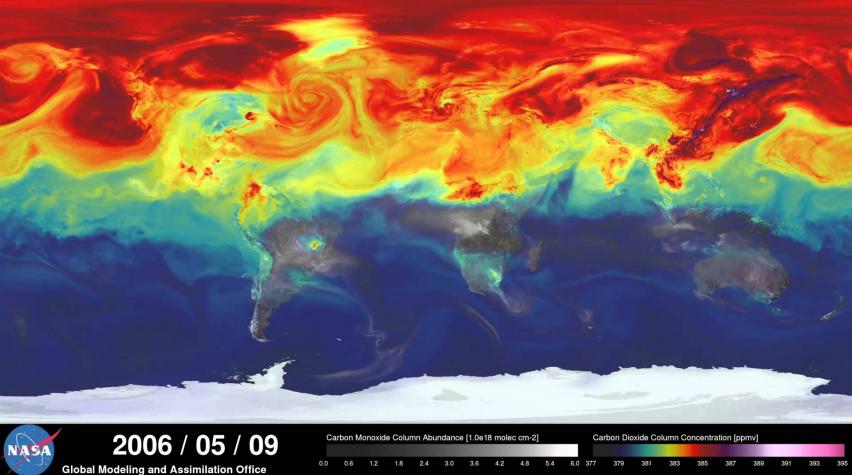
Cities for Climate Protection program
Energy–nutrients–water nexus: Integrated resource recovery in municipal wastewater treatment plants
Chemosynthesis/Oxyhydrogen Reaction in Algae
Hydrothermal conversion of biomass to fuels and energetic materials
AVA-CO2 Achieves a Breakthrough in Phosphorus Recovery and Introduces the "AVA cleanphos" Process
The Blue Biochar Initiative (BBI) website
Gigantic Ocean Vortices Seen From Space Could Change Climate Models
Biochar production from freshwater algae by slow pyrolysis:
Fast pyrolysis of microalgae remnants in a fluidized bed reactor for bio-oil and biochar production
Bio-oil and bio-char characterization from microalgal biomass:
Algal biochar – production and properties:
The Sustainable Shipping Initiative
"Proposed multifunctional OTEC plant
Advances and Innovations in Biochar Production and Utilization for Improving Environmental Quality
An Engineered Microbial Platform for Direct Biofuel Production from Brown Macroalgae
Establishing offshore autonomous communities:current choices and their proposed evolution
